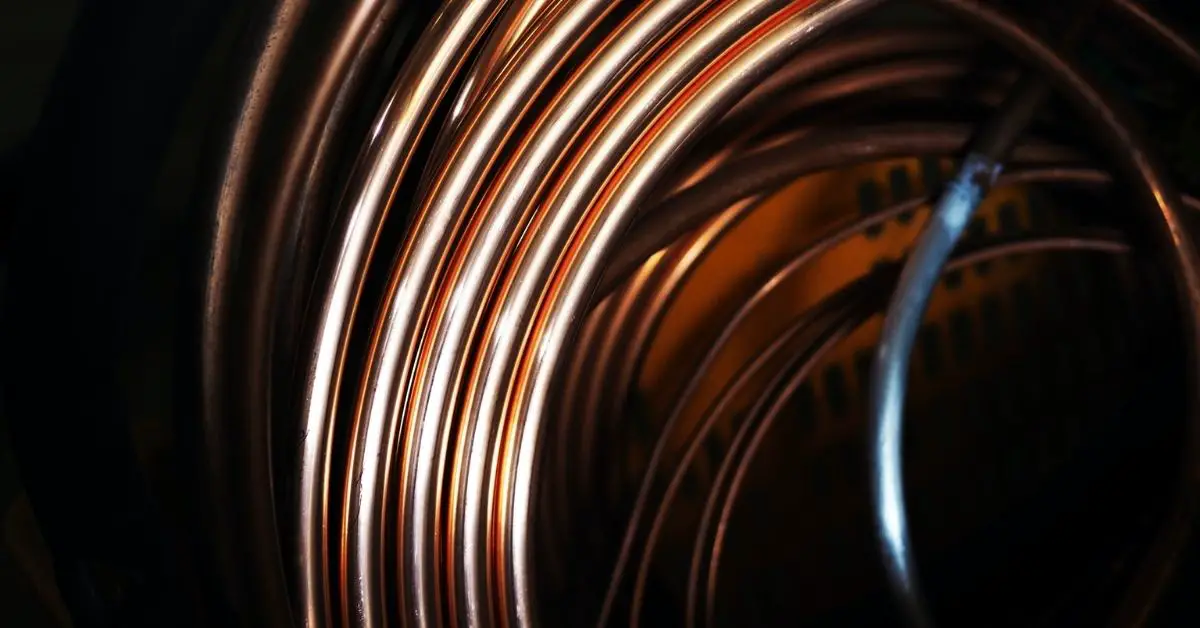Share

Many people think the process of cutting copper pipes is a difficult task, but it can actually be done with a Dremel. In this article, you will learn how to cut copper pipe with a Dremel without damaging your tools or material!
How to Cut Copper Pipe with a Dremel
In our last blog, you learned how to choose the type of PVC cement for pool plumbing. Now, we’re going to talk about how to cut copper pipe with a Dremel.
This method is for when you need very clean and precise cuts in your copper piping, like if it’s the only way you can make an angled connection or something similar.
Step 1
Put on gloves and safety glasses. Wearing these helps to protect you against metal shavings and sparks flying off the cutting wheel.
You can also wear a mask to keep bits of copper out of your lungs.
Step 2
Clamp down the pipe onto something that won’t move or slide, like wood blocks or another piece of copper piping (if it’s thick enough). You’ll want to make sure that whatever surface you’re using is slightly lower than where you will be making your cut, so any debris falls away from you instead of towards you.
If there are windy conditions, put plastic sheeting behind the area where sand/metal particles might get blown back on top of you, this sounds kind of ridiculous but think about how fine those metals would look if they got in your eyes, ears, nose, etc.
Step 3
Attach the metal cutting wheel to your Dremel tool and tighten it down securely with a wrench or pliers. Make sure that you’ve got enough room for maneuverability between where you are clamping down the pipe and right in front of your body so as not to bruise yourself on either piece of copper piping if they move at all when making contact with each other.
Then make sure there’s nothing around you that could be damaged by flying sparks/copper particles (that means anything within about 15 feet should be well out of harm’s way). You can also adjust how much space is between those two pieces depending on whether or not you want a more narrow cut line or something thicker.
Step 4
Now, turn on your Dremel and bring it up to speed. Apply medium-low pressure as you press the spinning wheel against the copper pipe.
It works best if you slowly begin at one end of where you need a cut and go all the way through so that there is no wiggle room for the metal cutting wheel afterward (the whole point of this exercise).
If you’re new at using a Dremel tool, don’t hold it down in one place for too long or keep going over an area because both can damage your tools by overheating them, which could cause them to snap apart. Also, make sure not to move around randomly with either hand holding onto/controlling the Dremel because it has the potential to throw you off balance.
Step 5
Check your work by seeing if you’ve made a clean cut through both pieces of copper pipe and that there are no jagged edges or sharp points sticking out on either side, which could lead to injury later. If so, go over those areas with sandpaper until they’re smooth enough for safe handling without cutting yourself (you don’t want any nicks in your fingers).
You can also use steel wool instead of sandpaper but make sure not to leave too much material behind because this will be harder than having bare metal exposed earlier when trying to attach PVC cement onto it during pool plumbing installations.
Doing things like using safety equipment/clamping down parts securely, keeping your body safe from harm, etc. are all things that should be included in every single blog post you write about any kind of DIY project because it’s just simply good practice to do so.
Step 6
If everything looks good, go ahead and take the pipe out of its clamping/restraining devices by loosening them carefully with a screwdriver or wrench without losing track of which way is up (or down) on either piece of copper pipe when doing this step.
Be sure not to lose contact between those two pieces while they’re no longer clamped together since if one side goes flying off into outer space, there’ll definitely be some problems trying to attach PVC cement onto bare later during pool plumbing installations.
Step 7
You can now put the pipe back into its clamping/restraining devices. If you’re using those things again on a different project or if this was your first time shutting them down from their ready position, go ahead and close up shop.
It’s always good practice to do regular maintenance checks on all of your power tools between uses as well as cleaning off any metal shavings that have accumulated around where they are used so nothing is left over for anyone else who may come along later (apart from yourself) which could cause a trip hazard.
Now you know how to cut a piece of copper pipe with a Dremel in no time at all! You can also read our next post about knowing if silicone sticks to PVC pipe.



0 Comments